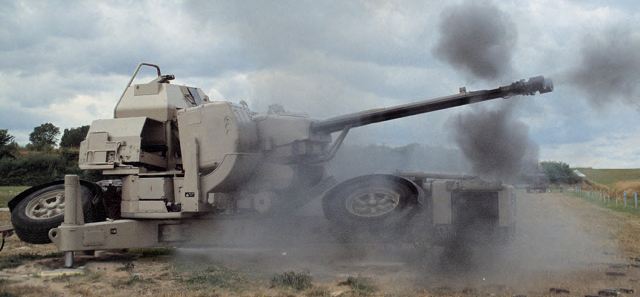BLACKEAGLE
ELITE MEMBER

- Joined
- May 9, 2007
- Messages
- 10,928
- Reaction score
- 2
- Country
- Location


Peace Shield is ae state-of-the-art C3I system developed for the Royal Saudi Air Force (RSAF). The Peace Shield system also links the networks of the Royal Saudi Land Forces (RSLF), the Royal Saudi Naval Forces (RSNF)nd Royal Saudi Air Defense Force [RSADF]. The Peace Shield program, built for the Kingdom of Saudi Arabia, required delivery of a nationwide ground-air defense, and command, control, and communications system to the Royal Saudi Air Force. Key elements included 17 radars, a central command operations center, five sector commandand operations centers, nation widecommunications links, interfaces with all agencies having a role in national defense, and communications centers to contact and control civil and military aircraft. Central command is executed from Riyadh, while sectors are controlled from Dhahran, Raif, Tabuk, Khamis Mushait and AI Kharj. The total system includes 164 sites and more than 1,600 communications circuits.

Peace Shield integrates 17 combined AN/FPS-117 long-range radar and remote-controlled air/ground radio communications sites; and an associated telecommunications network. Data from the RSAF's 17 General Electric AN/ FPS-117 long-range 3-D radars and six Northrop Grumman AN/TPS-43 tactical radars feed the system, together with data from 10 AWACS ground entry stations. The RSLF's AN/TPS-43 radars, the Raytheon Improved HAWK air defence missile system and the radars of the RSNF are also integrated into the system.

Conceived in the early 1980s, the Peace Shield program was not begun until 1985. Procurement of the Peace Shield system was conducted a Foreign Military Sale (FMS) with the Electronic Systems Division (ESD) of the US Air Force managing the contract. Hughes Aircraft Company (now Raytheon) was awarded a contract worth US$837 million by ESD for the Peace Shield program. The schedule requirements of 54 months to deliver a Peace Shield system were thought by many people to be impossible. There were some estimates as high as 116 months. They actually met 47 months. Total program cost was US$5.6 billion. Peace Shield became operational in late 1996 and is being continually upgraded under a maintenance and development program.

The seventeen General Electric FPS-117 L-band fixed, long range radars are identical to those retrofitted to USAF radar sites in Alaska under the SEEK IGLOO program. Ideally suited to severe climates, these radars are ECM-resistant and feature highly redundant circuit design and computer-controlled circuit reconfiguration which allows them to operate in what is termed "minimally attended" status on a day-to-day basis. The FPS-1l7 radars use a phased array antenna that will electronically scan a pencil beam signal in elevation while rotating in azimuth to give true three-dimensional detection capabilities. The radars are installed around the periphery of the country, and augmented the six Saudi Air Force TPS-43 and replaced the older Marconi 40T2 ground controlled intercept (GCI) radars already in the Saudi inventory.

In 1985 Saudi Arabia contracted with a consortium headed by Boeing for the Peace Shield command, control, communications, and intelligence (C3I) system. Its purpose was to link information collected by AWACS and ground-based surveillance radar with fighters and ground air defense, including the I-Hawk SAMs, to provide integrated air defense against attacks across the gulf and Red Sea and from the direction of Yemen. In 1991 it was announced that the Hughes Aircraft Corporation had assumed management of the project, which had been subject to delays in its completion.

The Air Force Peace Shield Litigation Team eventually included a team of eight attorneys and more than 300 support staff. This staff was detailed to the Justice Department to bring to trial the largest government contracts case ever filed against the Air Force in the U.S. Court of Federal Claims regarding a major foreign military sales program for the Kingdom of Saudi Arabia. This military and civilian team worked for four-and-a-half years on the case, eventually settling for a little more than $300 million on the governments behalf. During Fiscal 1997, Stewart & Stevenson Services, Inc. entered a Plea Agreement and a Settlement Agreement resolving all litigation relating to the 1987 contract to supply diesel generator sets for installation in the Kingdom of Saudi Arabia (the "Peace Shield Litigation"). The Company paid a $2 million criminal fine, a $2 million civil penalty, and $3 million in restitution to the U.S. Air Force. A $10 million provision for fines, penalties, restitution and certain unrecognized legal fees in connection with the Peace Shield Litigation was made in the third quarter of Fiscal 1997.

The Peace Shield system allows the Royal Saudi Air Force to manage its airborne and ground-based resources. It includes a Central Command Operations Center, regional centers, long-range radars, and a number of remote facilities. Raytheon, as the system developer, continues to sustain the system under a direct contract to the Royal Saudi Air Force.













 -
-